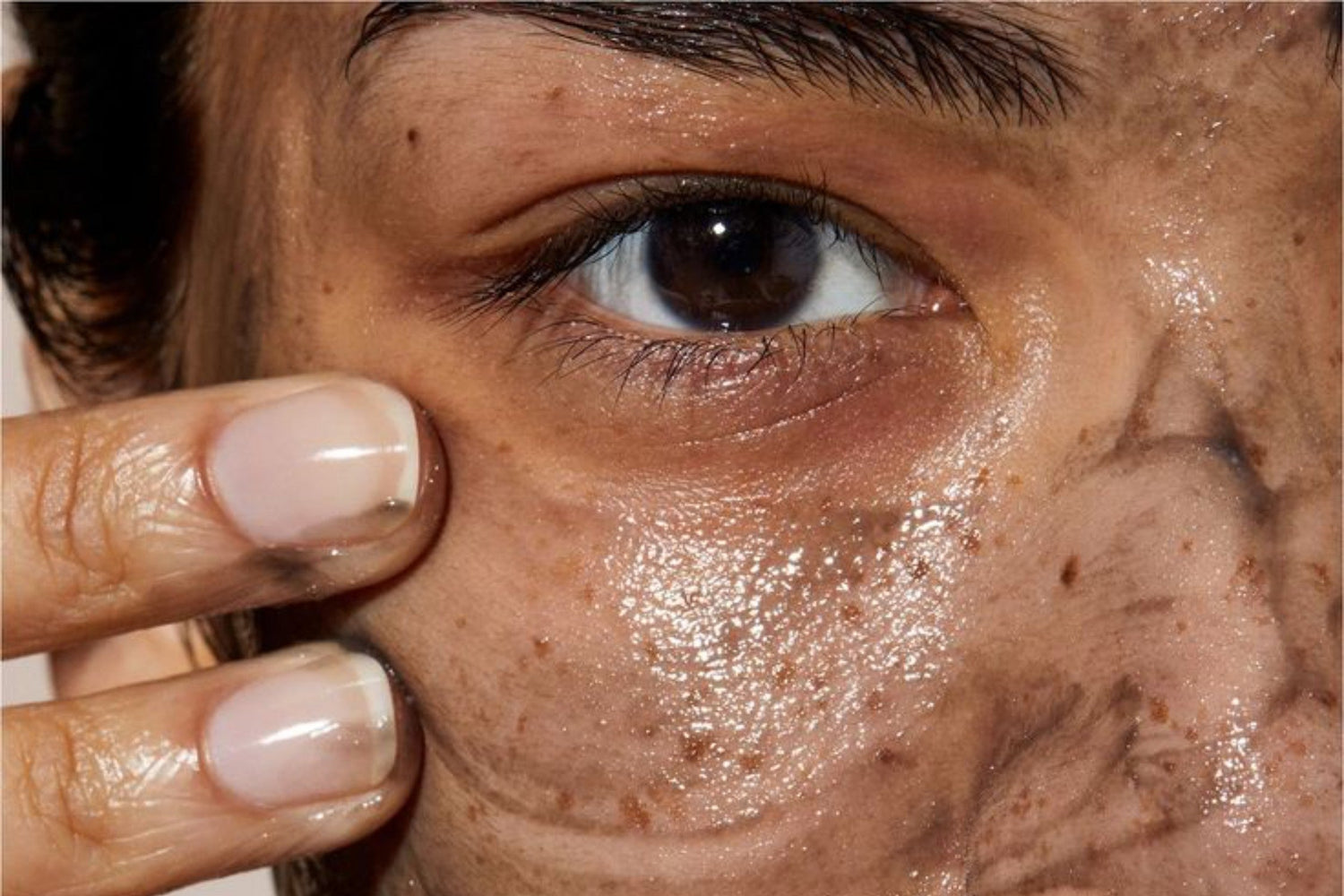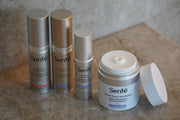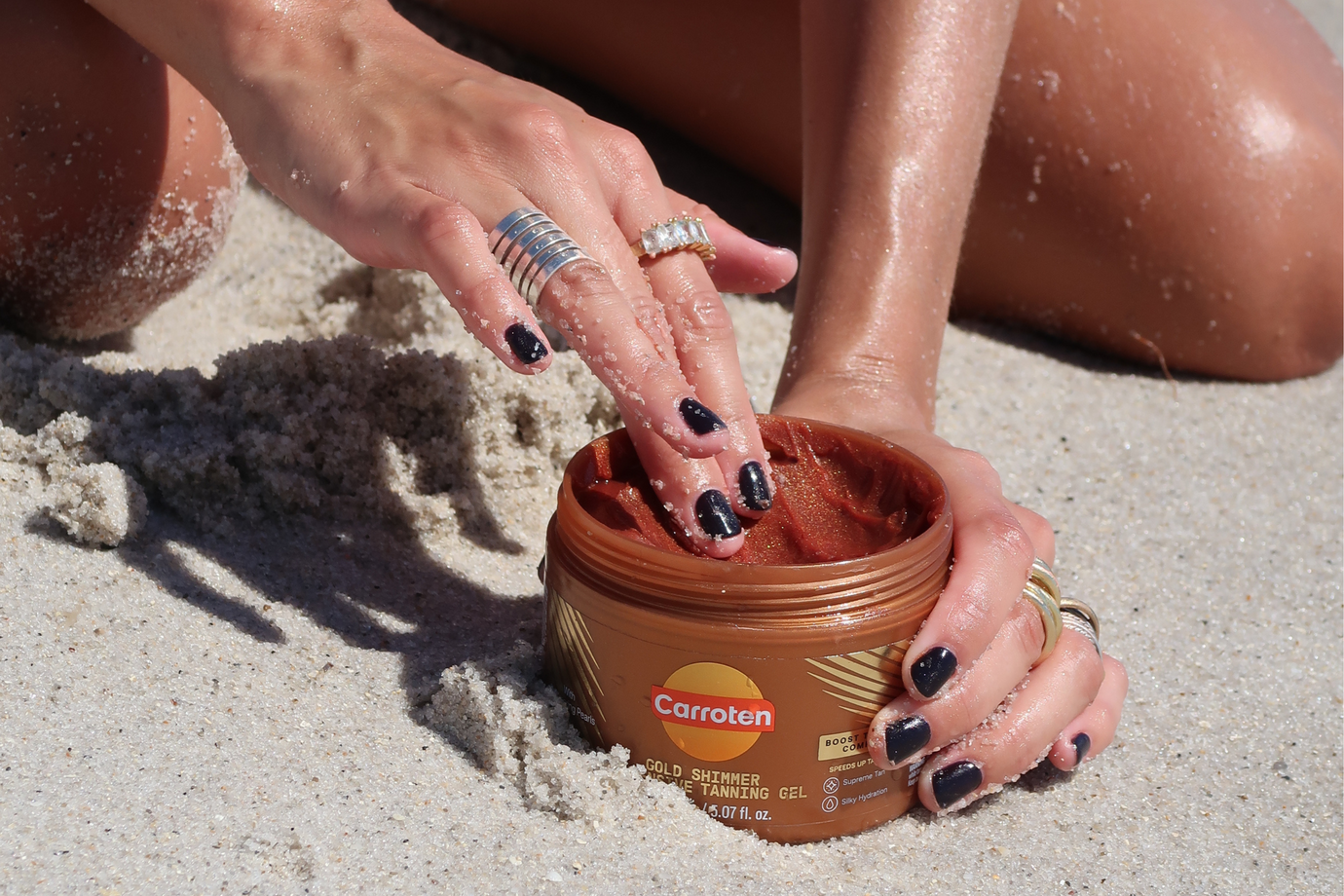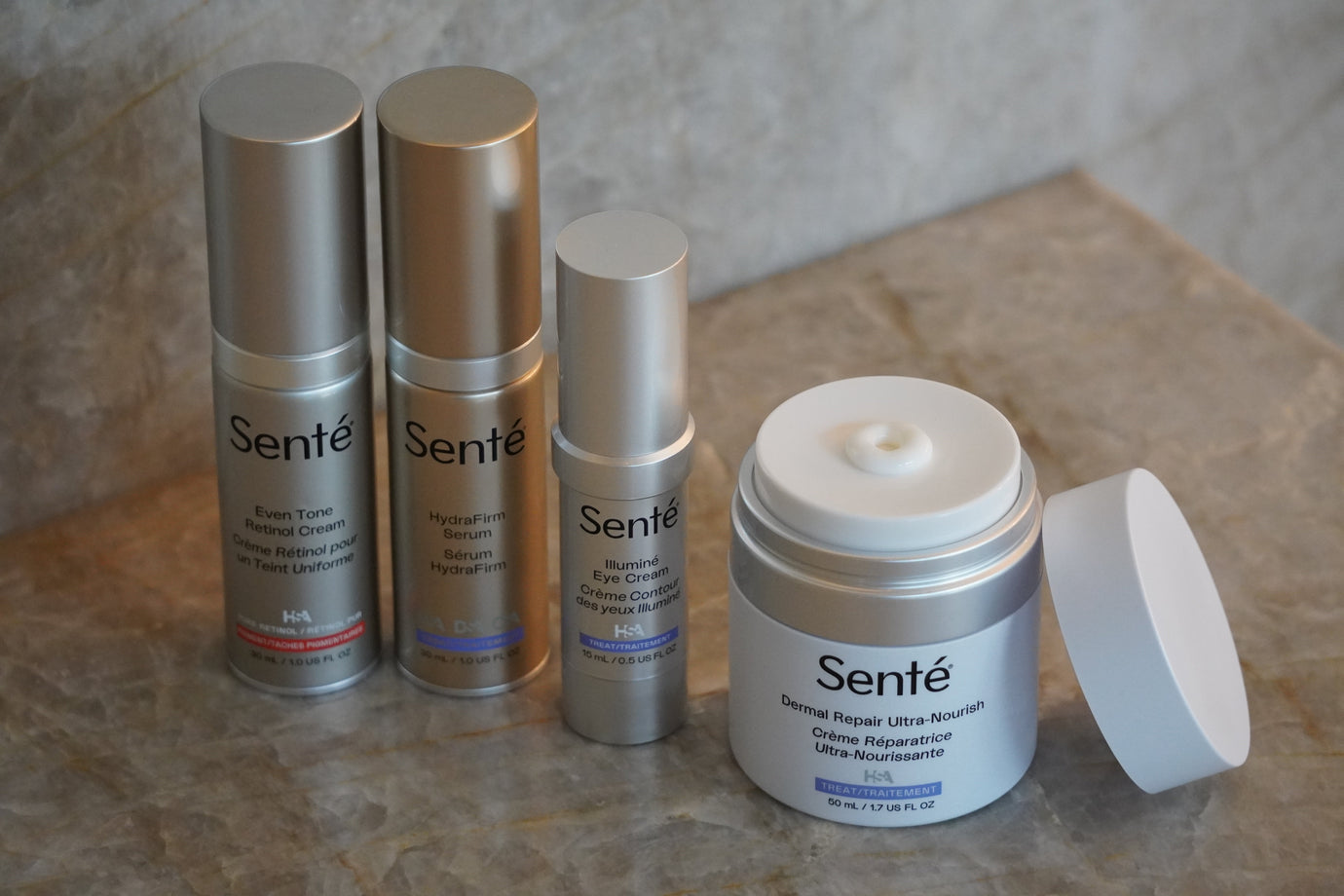A Complete Guide to Chemical Exfoliants

Exfoliation is an essential step for anyone committed to effective skincare. It might be time to rethink your routine if you're still using physical scrubs with questionable micro beads. Chemical exfoliants are gentler than they sound and far more effective than traditional scrubbing methods. With countless options available, it's essential to clarify what chemical exfoliants are, their benefits, and how to choose the right one for your skin.
What Are Chemical Exfoliants?
Unlike physical exfoliants (IE gritty scrubs or cleansing brushes), chemical exfoliants use chemicals to slough off dead skin cells. These ingredients work deep under the surface of your skin to dissolve the "glue" that holds dull, flaky cells together, revealing the fresher, brighter skin underneath.
Chemical exfoliants are typically classified into three main types:
Alpha Hydroxy Acids (AHAs)
AHAs are water-soluble chemical exfoliants derived from natural sources like sugarcane, milk, or fruit. They primarily target the skin's surface. They are a go-to if you're battling dullness, uneven tone, or fine lines.
- Examples include glycolic acid, lactic acid, and mandelic acid.
- Best for dry or sensitive skin types.
- SAYN Product Pick: Alpha Beta Hydroxy Pads by Dr. Lara Devgan
Beta Hydroxy Acids (BHAs)
Oil-soluble and slightly more intense, BHAs like salicylic acid are perfect for penetrating deep into your pores to combat oil and acne.
- BHAs are ideal if you're dealing with acne-prone or oily skin.
- They also have anti-inflammatory properties, making them a favorite for soothing redness.
- SAYN Product Pick: Clear Cell Clarifying Salicylic Gel Cleanser by IMAGE Skincare
Polyhydroxy Acids (PHAs)
PHAs could be considered a lightly gentler cousin of AHAs. Thanks to their larger molecular size, they're just as effective but less irritating.
- Perfect for ultra-sensitive skin or those new to chemical exfoliation.
- Examples include gluconolactone and lactobionic acid.
- SAYN Product Pick: Stabilizing Facial Cleansing Gel With AHA + PHA by Natura Bissé
The Benefits of Chemical Exfoliation
The perks of using a chemical exfoliant go way beyond glowing skin. Here's what you can expect:
- Refined Texture: Unlike physical scrubs that can create micro-tears, chemical exfoliants work more uniformly, softening uneven texture for a smooth-as-satin result.
- Reduced Acne and Oiliness: BHAs, in particular, unclog pores to keep breakouts at bay and balance excess sebum.
- Even Skin Tone: AHAs fade pigmentation and dark spots over time, giving you a radiant and uniform complexion.
- Boosted Hydration: AHAs, like lactic acid, can improve skin's moisture retention, leaving your face plump and dewy.
- Enhanced Absorption: Removing dead skin allows your other products—serums, moisturizers, oils—to work harder and penetrate deeper.
A consistent routine with the right exfoliant will improve your skin barrier over time and create desirable glass skin.
When and How to Use Chemical Exfoliants
There's no one-size-fits-all solution when it comes to chemical exfoliation. But here's a little cheat sheet to keep your skin happy and healthy:
1. Determine Your Skin's Needs
- Have dull, dry, or aging skin? Choose an AHA like glycolic acid.
- Struggling with acne or oily skin? BHA is your best bet.
- Sensitive newbie? PHAs all the way.
2. Go Slow, Start Small
- Applying it every night can do more harm than good. Start with 2–3 times a week, then adjust based on how your skin reacts.
3. Evening is Ideal
- Many chemical exfoliants (especially AHAs) can make your skin more photosensitive, so apply them at night, followed by a rich moisturizer.
4. Don't Skip SPF
- Always follow up with sunscreen daily to shield your radiant skin from UV damage.
5. Mix with Care
- Avoid combining chemical exfoliants with potent actives like retinol or Vitamin C in one routine. Play it safe and alternate on different nights.
6. Patch Testing is a Must
- Test the product on a small area of your skin before slathering it all over your face.
Chemical Exfoliation FAQs
Q. Can I use multiple exfoliants at once?
Stick to one type of exfoliant per routine, and layer sensibly.
Q. What should I do if I notice redness?
Redness might occur if you've over-exfoliated. Avoid all actives and nourish your skin with ceramide-rich moisturizers.
Q. How soon will I see the results?
You may notice a softer texture within days, while more profound benefits, like reduced pigmentation and fine lines, can take a few weeks.





